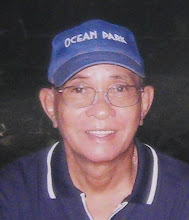FLORES DE MAYO
“Flores de Mayo” in Alfonso, Cavite was established during the term of Rev. Fr. Jose Sta. Teresa (1861). The first big celebration supposed to be headed by Hermana MayoraMaria del Mundo was to take place in the year 1895 but it was cancelled due to people’s apprehension about the impending revolution and many went into hiding.
The following year the festival was done in a very simple way of floral offering at the foot of the Virgin Mary every afternoon during the Month of May. This was preceded by the praying of the Holy Rosary, and then at the last Sunday of the month a procession was held together with little girls carrying the flower-decorated letters that read AVE MARIA PURISIMA. Also following the little girls were pretty teen-agers in their Sunday best.
But the youth were not satisfied with the simplicity of the festival. Cabecillas who offered the food to the participants were assigned daily aside from the grand banquet offered by the Hermana Mayora at the height of the celebration on the last Sunday of May. The preparation for said banquet usually lasted for about a week.
After several years the town ran out of hermanas who could afford to shoulder a grand festival so that in 1923 the traditional May festivities were temporarily stopped. But in the following years, the months of May turned disastrous. Calamities visited the town and a strong typhoon in 1926 blew off the church’s roof.
The superstitious parishioners thought that the Virgin Mary “was angry” because they stopped the celebration of Flores de Mayo. The festivity was resumed in 1927 headed by Miss Rufina Rosanes (Mrs. Gregorio Columna) as Hermana Mayora and president of the organization at the same time.
The role of society entered the picture. What used to be a purely religious matter was adulterated with social color and it became even more grand and noisier than ever before. Many changes happened. This was felt more during the Japanese occupation. People then were forced by circumstances to be in their hometowns and just like what happened in Alfonso, so many civic organizations were organized.
Probably to turn away the people’s mind from the terrors of war, the Parish Priest, Rev. Fr. Pacifico Araullo thought of making the May Festival more interesting and appealing to the young ones… The male population was included in the organization and even a SANTACRUSAN was introduced (another Festival different from “Flores de Mayo” as this is connected to Queen Helena’s search for the cross where Jesus was crucified). Instead of once during the month, the “Santacrusan” was held every Saturday.
To the youth, one month was not enough so they extended the “Santacrusan” up to the month of June and simply called it “SANTA CRUZ DE JUNIO”.
Every new set of officers thought of ways to make the celebration more elaborate to outdo the previous one. “Flore de Mayo and “Santacrusan” were combined to add more SAGALAS.
Not long after, the town again ran out of hermanas. But this was solved when in 1956, the Lady President, Miss Celeniana Varias (Mrs. Apolinar Mojica) also acted as the Hermana Mayora. This style continued until 1960. The following year Miss Norma Rogacion (Mrs. Nestorio Hernando), headed the line up of new hermanas which went on until the time of thiw writing (1999).
Very new set of officers strove to make the May Festival Celebration more meaningful. In 1976, during the time of Rev. Fr. Avelino Sapida, with the help of the research done by the author, a new guideline uniquely for the town of Alfonso was introduced. Sagalas represented the fifteen Mysteries of the Holy Rosary and the different titles of the Virgin Mary in the Litany.
From the book TINGKORAW: Alfonso's History and Legend by jett e. avinante, m.d.
Subscribe to:
Post Comments (Atom)

No comments:
Post a Comment